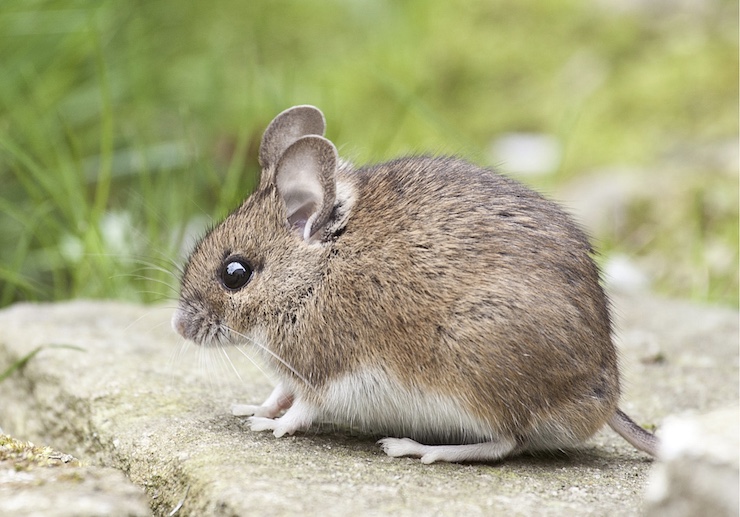Farmers In Australia To Begin Using Drones To Spread Rodenticide, to Help Reduce the Growing Mice Problem

Animal groupings are often given apt names. A group of otters is called a “raft”, a group of porcupines is called a “prickle”, and a group of giraffes is called a “tower”. Perhaps one of the most fitting names for a group of animals is for a group of mice, otherwise known as a “mischief”. Mice can certainly cause a lot of mischief when they get into your home. Since October of 2021, mischief doesn’t even begin to describe the problems being caused by mice in northwestern New South Wales and southern Queensland, Australia. A series of factors has led to one of the worst mouse infestations in memory for Australia. The mouse problem has gotten so out of control that some refer to it as a plague of biblical proportions.
It seems as if Australia has been faced with one massive plague after another over the last few years. It began in June of 2019 with the start of the annual wildfire season. After a particularly dry winter, authorities feared they could be facing an unusually intense bush fire season. This prediction sadly came true as the nation was gripped by the worst fire season in history, colloquially being named the Black Summer. Approximately 18,636,079 hectares of land were destroyed, causing over $103billion in damages. The fires weren’t contained until May of 2020, and by that time Australia, and the rest of the world, were facing the realities of a global pandemic, COVID-19. Towards the end of the summer of 2020, things were beginning to look more positive though.
The fires had all been put out, the air had begun to clear, people had adjusted to the new normal of living in a post pandemic world, and cases of COVID-19 began to decline. For Australian farmers, the dry conditions that contributed to the bush fires were followed by just the right amount of precipitation to ensure prosperous yields. As any farmer can attest, these conditions also mean that mouse populations could also increase. In most cases, mouse infestations are treatable and containable, a factor that is figured into the yearly expenses for farm management. However, things once again got out of control, and the mischiefs have run rampant.
By six weeks of age, mice can reproduce a litter of 6-8 pups every 21 days. “We’ve had a run of dry years and [now] the drought has essentially broken, so the mice get switched on to that change in environmental conditions, and they start to breed,” said Steve Henry who conducts mice research with Australia’s national science agency, the Commonwealth Scientific and Industrial Research Organization. “The farmers have had a good crop and that puts a lot of food into the system. So you’ve got favorable climatic conditions, favorable food in the system, lots of good shelter, lots of moisture.” Henry went on to say “Some farmers are giving up on summer crops because the mice have damaged them so severely, so that’s essentially a total crop loss. And in some scenarios where farmers have managed to get the crops through to harvest, they’ve had it rejected because it’s full of mouse poo.”
The mice are everywhere, not just on farms. They are causing mischief in homes, hospitals, and businesses throughout Australia. Because there are so many mice, the poisons being used to treat them are simply not strong enough. Added to that is the fact that the country is running out of pesticides while people are becoming so financially burdened they can’t even afford to keep up with it. Recently the government approved the use of zinc phosphide, a rodenticide, at double strength. The hope is that with a stronger rodenticide, the population can be effectively contained. The next question is how to apply the poison.
Traditional methods would mean a farmer driving through a field and spreading the poison. Though this works, it has several downfalls. It is a time consuming process that will “stir” up and cause the mice to scatter. And since it is best done during the day, birds sometimes eat the bait as well. The biggest problem is that by driving through fields to bait rodents, much of the field gets destroyed. Roger Woods, a Queensland farmer and founder of Drone Commander Australia, proposes using drones to spread the poison bait. “If you need to drive over it to spread mouse bait, you lose $35 of grain per hectare with wheels running over it,” he said. “Drones only cost $10 per hectare.”
A former military helicopter pilot, Roger founded Drone Commander in 2012 alongside farmers. Recently, he was granted permission to begin broadly using drones to help the farmers of Australia spread the double dose of zinc phosphide. A few weeks ago Australia saw some heavy rains that people hoped would curb the mouse infestation. The rains barely put a dent in the problem, which is why Roger strongly believes that drones need to get up in the air and start to proactively wipe out the mice before farmers need to begin sowing winter crops.
Other experts have said that this is not the worst mouse infestation in terms of numbers that Australia has seen. It is however the most persistent infestation, mainly because people simply can’t bait quickly enough to stop population growth. Drones could get the job done faster, hopefully, so that life can get back to normal. “What we do want to see is farmers given the best possible tools they have to deal with this,” Roger said, “and if farmers can use drones and it helps get the job done that’s terrific.”
|